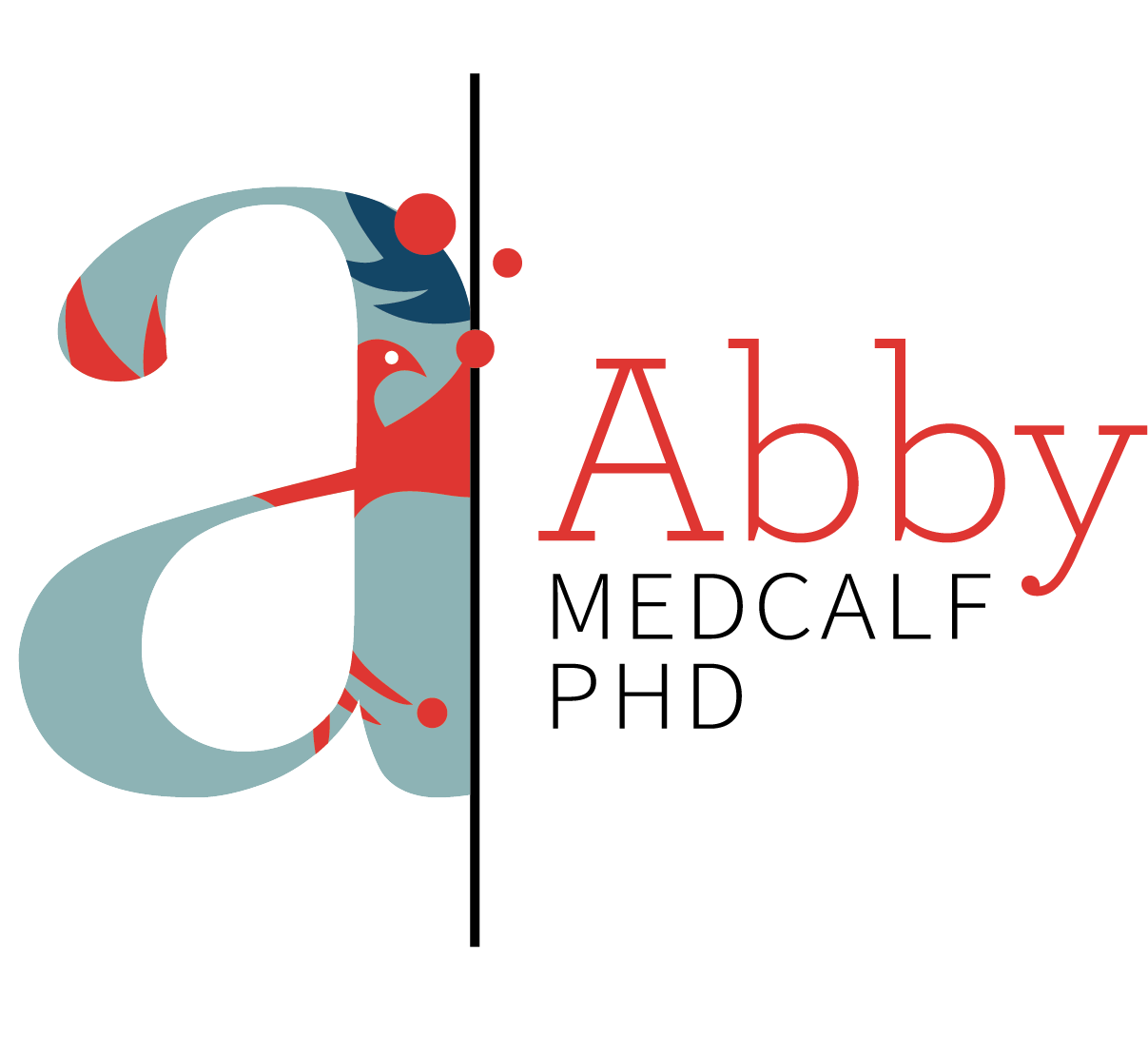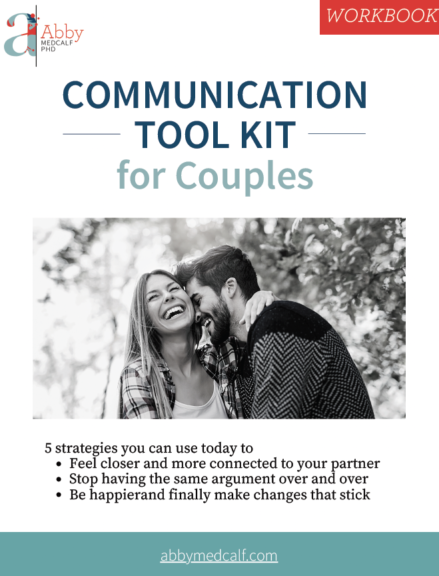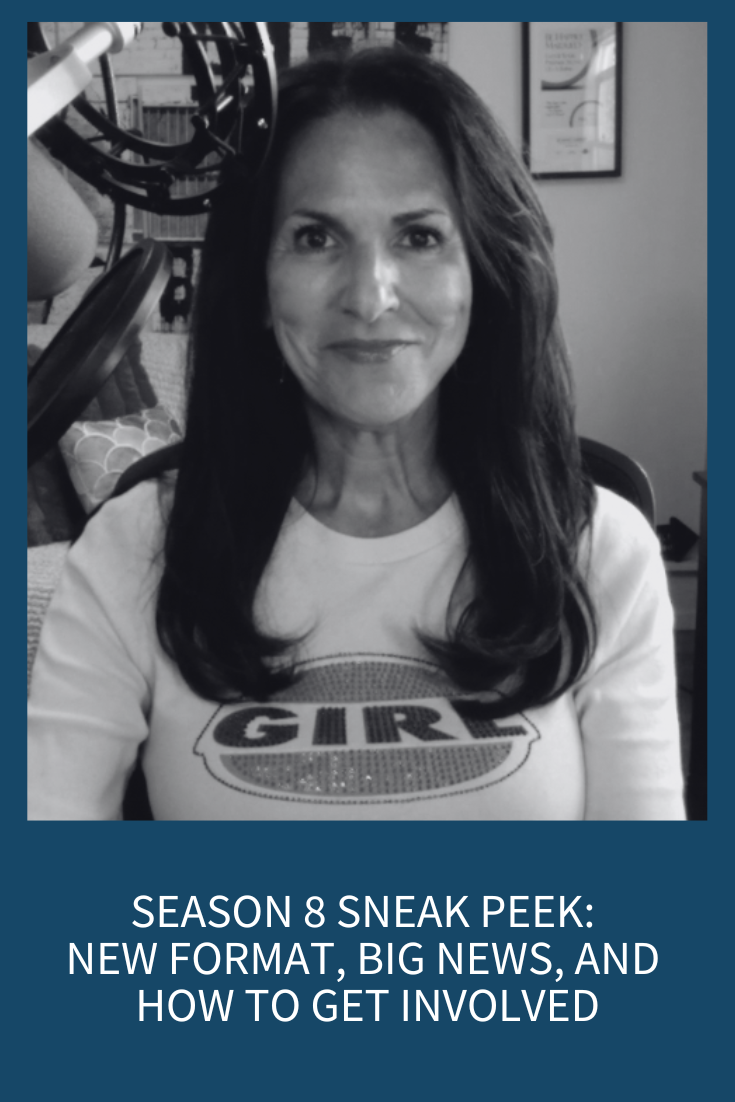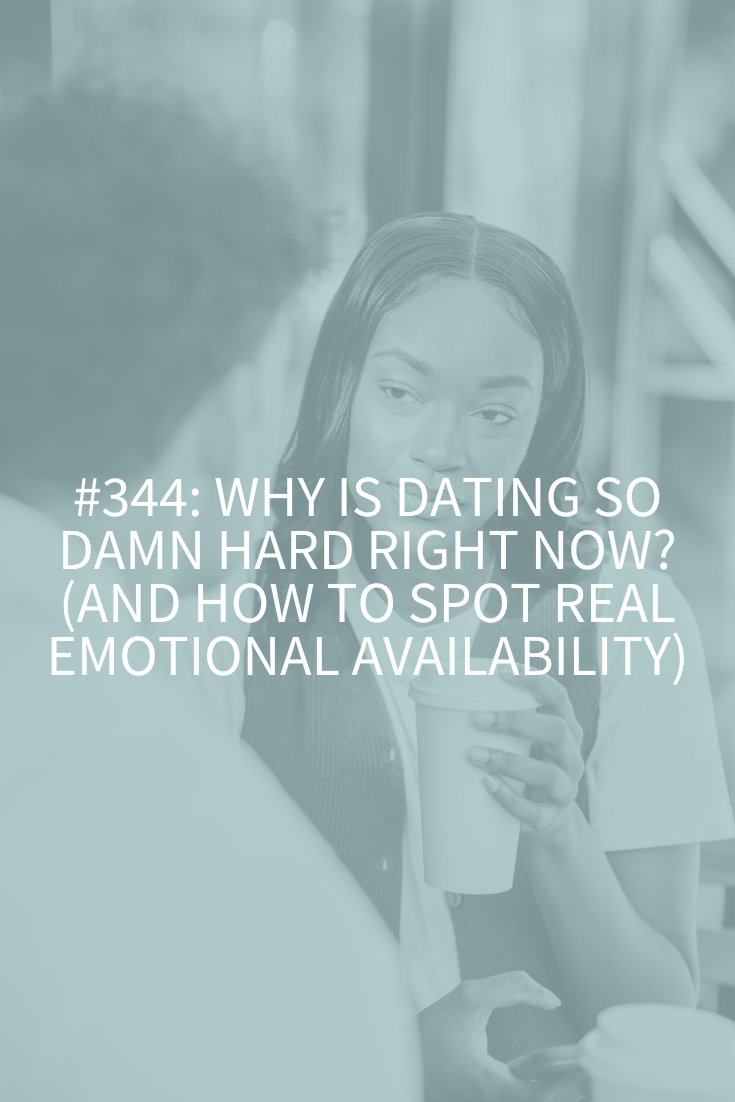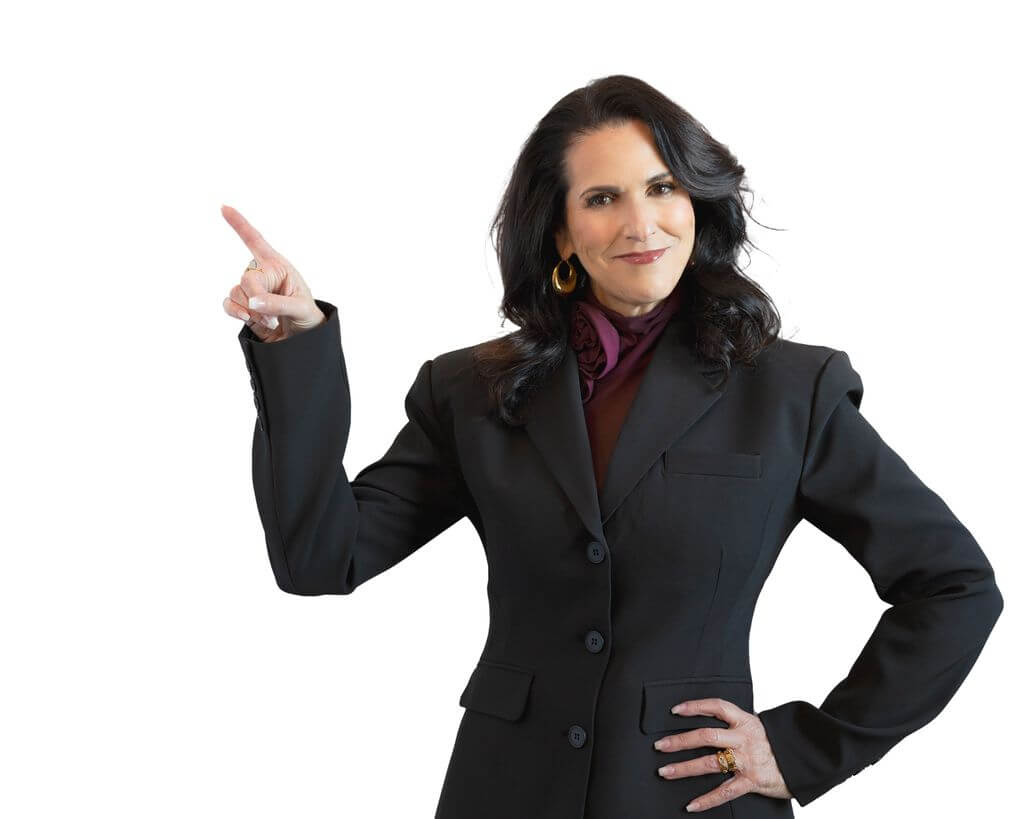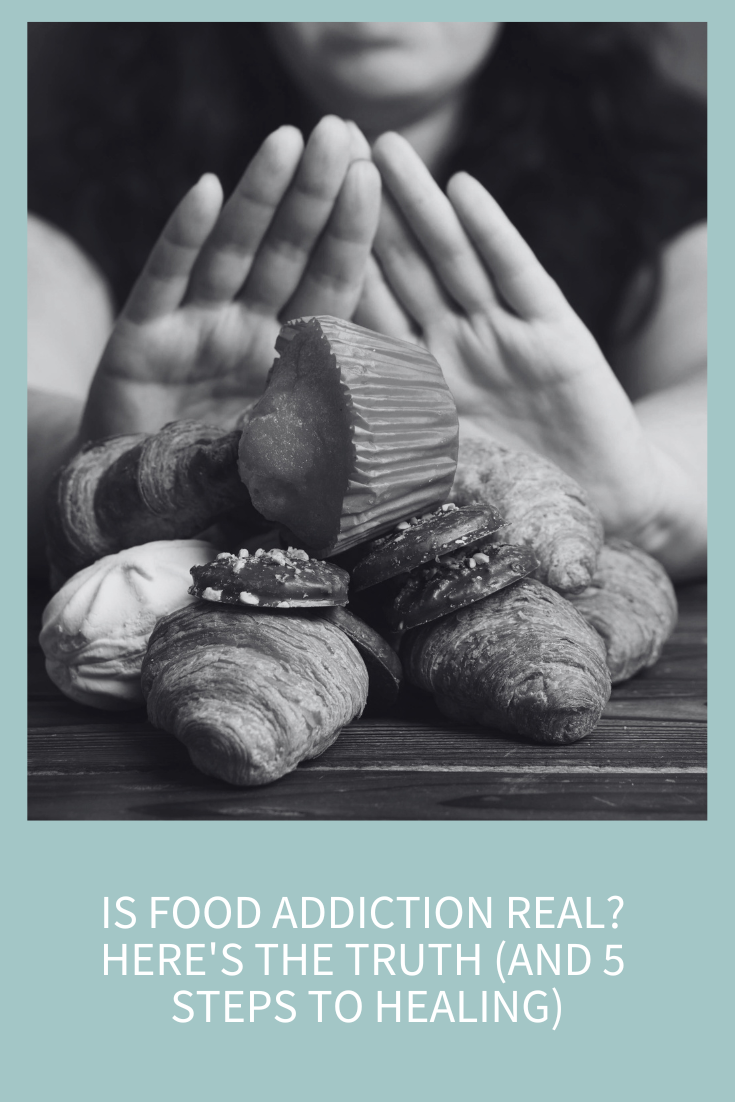
Let’s start with a hard truth wrapped in a soft blanket: Yes, food addiction is real, and if you’re struggling with it, you’re not broken, lazy, or weak. You’re human. You’re living in a world where the food industry spends billions engineering snacks to hijack your brain, and your biology is just doing its thing, trying to survive. Today we’ll cover all the research and the “why” of food addiction, and then I’ll give you my five actionable steps to start healing your food addiction.
7-minute read
What Is Food Addiction?
Although “food addiction” isn’t officially listed as a diagnosis in the Diagnostic and Statistical Manual of Mental Disorders (DSM-5), the concept is widely accepted and studied. In fact, a growing body of research shows that certain highly processed foods, especially those high in sugar, fat, and salt, light up the brain’s reward system much like drugs of abuse do.
This includes the release of dopamine, the neurotransmitter that says, “Hey! That felt good, do it again!” For some people, this feedback loop can spiral into compulsive eating behaviors that look and feel a lot like drug addiction. Researchers often use the Yale Food Addiction Scale (YFAS) to identify symptoms of addiction-like behavior related to food. These include things like:
- Eating more than intended
- Repeated unsuccessful attempts to cut down
- Continued use despite negative consequences
- Cravings so intense, they interfere with daily life
This means you might be eating a pint of ice cream after a long day, even though you’re not hungry, you’ve promised yourself you wouldn’t, and you feel physically uncomfortable or emotionally distressed afterward. That’s not just emotional eating; that’s the territory of food addiction.
What Makes Food So Addictive?
Here’s the sneaky part: You don’t get addicted to broccoli. You get addicted to hyperpalatable foods, those scientifically engineered combos of fat, sugar, and salt designed to keep you coming back for more. Think chips, pizza, cookies, soda, ice cream, fast food. These foods create a dopamine high that your brain wants to chase. Over time, just like with drugs or alcohol, your brain needs more to feel the same hit. So the cravings get louder, and your ability to stop gets weaker.
These foods are also usually low in fiber and protein, meaning they don’t satisfy your hunger or help regulate blood sugar. You can eat and eat and still feel “snacky” an hour later. That’s by design.
One major theory explaining this is the incentive sensitization theory: the more your brain associates pleasure with these foods, the more you want them, even if you don’t actually like them anymore. It’s the weird moment when you’re eating a donut you’re not enjoying but can’t seem to stop.
Take the 5-Day Dopamine Reset Challenge!
Emotional Eating vs. Food Addiction
Here’s where things get muddy. Emotional eating is super common (and not inherently bad!). Who hasn’t reached for chocolate during a breakup or stress-eaten popcorn during a deadline crisis?
But food addiction goes beyond that. It’s not about the occasional comfort snack, it’s about persistent, compulsive behaviors around food that lead to distress and dysfunction. You might find yourself hiding food, eating in secret, obsessing about what you’ll eat next, or feeling unable to focus until you get a “fix.”
One way to think of it: All food addicts are emotional eaters, but not all emotional eaters are food addicts. If food is your primary or only coping tool, and you find yourself feeling out of control or emotionally wrecked after eating, it’s worth exploring whether something deeper is going on.
Is This Just a Diet Culture Thing?
You might be wondering: is the term “food addiction” just another sneaky way diet culture tries to make us feel ashamed of eating? Nope. Real food addiction isn’t about weight or willpower. In fact, people of all sizes struggle with it, and it’s not something you can fix with another restrictive diet (those usually make it worse).
Diet culture thrives on all-or-nothing thinking: You’re either “good” or “bad” depending on what you ate. Food addiction recovery, on the other hand, is about healing your relationship with food, not punishing yourself. It’s about removing shame and understanding that your brain has been wired for survival in an environment that exploits those instincts.
The key difference is that food addiction is about loss of control and mental preoccupation, not about eating a slice of cake now and then. Someone without food addiction can enjoy a few cookies and move on. Someone with food addiction might eat the entire box, feel physically ill, and still be thinking about getting more.
Five Steps to Start Dealing with Food Addiction
If you see yourself in what I’ve shared so far, take a breath. You’re not alone, and you’re not beyond help. Here’s where you can begin:
1. Ditch the Shame Narrative
You’re not addicted to food because you’re weak. Your brain is doing what brains do: seeking pleasure and avoiding pain. Beating yourself up just adds more stress (which, guess what, can lead to more food cravings). Practice self-compassion instead.
This means replacing self-critical thoughts like “I have no willpower” with “I’m doing my best in a tough environment.” Research shows that self-compassion reduces binge eating and emotional eating behaviors. Another study found that self-compassion interventions help regulate stress, which can reduce reliance on food for comfort.
2. Identify Your Trigger Foods
Start keeping a log – not of calories, but of emotions and situations. Which foods feel compulsive for you? When do you reach for them? What are you avoiding or numbing?
A 2021 study found that people with food addiction often reported higher emotional reactivity and used food as a coping mechanism for stress. Logging can help you spot the pattern between stress and your food behaviors and give you a chance to choose differently. My online community, The One Love Collective, is getting a tracking log as part of their membership. If you’d like the log, but don’t want to sign up for the community, you can buy the bundle of everything my community will be getting for $8.
3. Feed Yourself Regularly
Restriction and deprivation are major drivers of food addiction. When you don’t eat enough or label foods as “bad,” you increase the likelihood of a binge later. Your body perceives scarcity as a threat and pushes you toward high-calorie foods.
Research has shown that regular eating patterns, particularly those that maintain stable blood glucose levels, are associated with fewer binge-eating episodes and better appetite regulation. Intuitive eating approaches also emphasize the importance of consistent nourishment to reduce food preoccupation and promote satisfaction.
4. Find New Sources of Dopamine
Your brain still needs pleasure. It just needs healthier, more sustainable sources. Start experimenting with movement, hobbies, music, laughter, or connecting with people you love. Dopamine isn’t the enemy, it’s about where you source it.
Physical activity, for instance, has been shown to increase dopamine levels and improve mood regulation, helping reduce dependence on food as a reward. Even small acts like spending time in nature or practicing gratitude can elevate dopamine naturally.
5. Get Support
This one’s non-negotiable. Whether it’s a therapist trained in food and body issues, a support group, or a coach who gets it, having people in your corner makes all the difference.
There’s evidence that mindfulness-based eating interventions can significantly reduce food addiction symptoms. Other studies have found that cognitive-behavioral therapy (CBT) and group support are particularly effective in reducing compulsive eating behaviors and improving emotional regulation.
Healing is possible, but doing it alone makes it harder.
Wrap Up
If food addiction is something you’ve been quietly wrestling with, let me say this loud and clear: You’re not alone, and you’re not crazy. Your brain and body are doing exactly what they were wired to do in a toxic food environment. The good news? You can rewire it. With support, compassion, and science-backed tools, healing is absolutely possible. And no, you don’t have to give up every cookie forever.
For the One Love Collective Community:
Tier I: Inner Circle
- Journaling Prompts: Get Real with Your Relationship to Food
- Trigger Food and Emotion Tracker
Tier II: Love Accelerator
- Boundaries Around Food & People Worksheet
- New Mantras for Food
Tier III: VIP Love Lab
- Reflection Questions
- Weekly Meal Rhythm Template
- Self-Compassion Script for Food Shame
Get all the above for just $8 on Patreon!
Resources for Is Food Addiction Real? Here’s the Truth (and 5 Steps to Healing)
Join Abby’s One Love Collective on Patreon!
Buy the bundle for this episode for only $8!
Why We Eat Our Feelings: Understanding and Overcoming Emotional Eating
Is Self-Compassion the Secret to a Happy Relationship?
Dopamine Detoxing is a Scam (But You Should Still Do It)
Yale Food Addiction Scale, Food and Addiction Science & Treatment Lab
